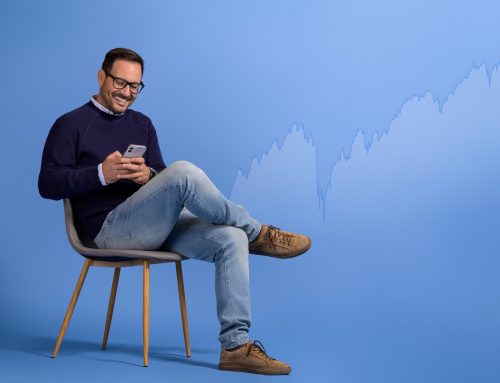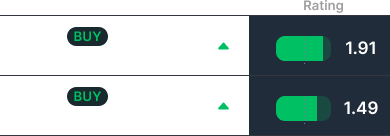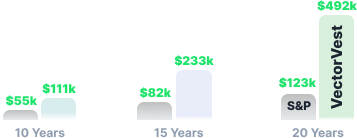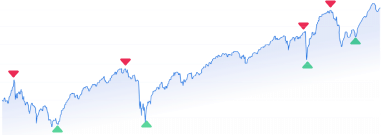by Leslie N. Masonson, MBA
Investors dream of a reasonable portfolio return devoid of risk, but that precondition does not exist and is naive. Even investing in bonds is not without risk, as investors learned in 2022, when both stocks and bonds declined by 18.6% (S&P 500) and 13.7% (Vanguard Total Bond Index –BND), respectively. By the way, that was the bond’s worst annual return in 97 years.
Having both asset classes decline in the same year is very infrequent, but it happens. Nevertheless, even using a diversified common 60%/40% (stocks to bonds portfolio percentage) produced a 2022 combined loss of 15.3%, compared to a 22.6% loss in 2008, using the same ratio, the last time both fell together.
If investors want to avoid risk entirely, then they should not buy stocks, equity ETFs, or equity mutual funds. The safest choices are U.S. Treasury bills, FDIC-insured CDs, or SIPC-insured money market accounts. However, inflation will eat away at those returns, especially when the rate of inflation exceeds the yield, as was the case in 2022.
Are ETFs as risky as individual stocks? Well, that depends on the individual ETF’s holdings. In general, an investor-constructed portfolio of fewer than twenty stocks (with low correlation to each other) would exhibit more risk than holding passive index-based ETFs such SPY or VTI with 500 and 3,833 holdings, respectively. And certainly, many individual small-cap tech stocks have much higher risks than a comparable ETF tech portfolio (XLK).
Let’s compare two ETFs to one another from the risk standpoint. A biotech-focused ETF (IBB) would be much riskier than a utility-focused ETF (XLU); a short-term bond ETF (IEF) would be less risky than a long-term bond ETF (TLT); and lastly, the Dow-Jones Industrial Average ETF (DIA) would be less risky than the Nasdaq 100 (QQQ). So total portfolio risk is dependent on the stocks held in the portfolio and their percentages of the total assets. As mentioned in the last article titled ETF Risk, there are various measures of risk including the Sharpe Ratio and Sortino Ratio that can be used.
Knowing that risk is a critical factor to be concerned about, what can an ETF investor do to reduce it? The most common and often-used solution is to build a diversified ETF portfolio. However, be aware of the potential for portfolio overlap by holding the same stocks when buying more than one ETF. That means that owning two different ETFs with similar holdings does not provide proper diversification.
According to ETFAction.com, owning both SPY (SPDR S&P 500 ETF Trust), and VTI (Vanguard Total Stock Market ETF) results in an overlap of 85.1% (500names) in the portfolio, since all the stocks in the S&P 500 are in VTI which holds 3,833 stocks. Similarly, owning QQQ (Nasdaq 100) and XLK (Select Sector SPDR Technology) has a 47% (or 27 names) overlap. Therefore, it is necessary to review the portfolios of ETFs you plan to purchase and look carefully at the top 10 holdings to determine the overlap percentage. Steer clear of those with too high (e.g., 10%) a percentage of overlap.
Diversify to Limit Risk
The most common approach to mitigating against risk is to have a diversified ETF portfolio, with an annual or quarterly rebalance based on the calendar or a technical analysis determined the time to do the rebalance. In the ETF arena, one example would be to own three index ETFs such as Vanguard’s VTI, and VXUS (Vanguard Total International Stock Market with 7,848), and BND (Total Bond Market with 17, 699 bonds), with a one-third position in each, or any other percentage that fits the person’s risk tolerance profile. This allocation to 19,430 holdings is certainly diversified. A more aggressive investor may want to add an additional 5% position of QQQ to add more of a tech tilt by dropping VTI to 28% from 33%.
Unfortunately, too many investors do not include international ETFs in their portfolios, which John C. Bogle was a champion of, in their portfolio mix. This is a major shortcoming, as international ETFs have had some powerful market returns over a number of years, but less so in the last few years, although they are doing well in 2023. Check out Meb Faber’s free book titled: Global Asset Allocation on his website mebfaber.com/books, to see the value of having an international portfolio component.
Another key element to minimizing risk is to rebalance the diversified portfolio either quarterly or annually or whenever it gets out of balance by five percentage points. For example, in the case above with one-third of the portfolio in VTI, VXUS, and BND, if the portfolio ends up in a year with a weighting of 38%/30%/22%, then it should be rebalanced back to 33.3% each so that it meets the original allocations based on your risk tolerance parameters. Another possible option is to add a small cash component (such as 5% in a money-market or one-year Treasury note) to the portfolio to add more stability if there are unsettling economic or political conditions. That would require a reduction in the VTI and/ or VXUS of the 5%.
Another diversification consideration is to stick with the standard index ETFs such as SPY, DIA, QQQ, IWM, and many others instead of including specialized factor and theme-based ETFs which tend to have higher risk stocks and be too concentrated. Think of an investor who purchased one or more of the ARK ETFs watching the spectacular 400% in ARKK’s ascent from March 2020 to the peak in February 2021, to the 82% descent into January 2023 giving back all of its gains and more. In 2023, ARKK has run up 64.5%, but still 70% off its $160 high in February 2021. Remember what John C. Bogle once said: “Index funds eliminate the risks of individual stocks, market sectors, and manager selection. Only stock market risk remains.”
The number and combination of ETFs to include in a diversified portfolio are almost infinite. In general, no more than five ETFs appear to be sufficient to spread the risk around. Therefore, investors need to do their homework and check each ETF’s website, portfolio composition, annual expense ratio, and risk factors as explained in their prospectuses. In summary, managing risk by diversification is one of the most important factors to implement to invest successfully. Therefore, investors and traders need to give serious attention to this topic before placing any money at risk in ETFs, otherwise, unexpected negative surprises may happen along the way that ruin a retirement plan or eliminate a gift to a grandchild for college, for example.
Want These Types of Insights at Your Fingertips so You Can Win More Trades?
Use VectorVest to Analyze any stock free. VectorVest is the only stock analysis tool and portfolio management system that analyzes, ranks and graphs over 18,000 stocks each day for value, safety, and timing and gives a clear buy, sell or hold rating on every stock, every day.
Before you invest, check VectorVest! Click here to ANALYZE ANY STOCK FREE and see our system in action!
What you should do next…
- Get our latest blogs delivered right to your inbox, subscribe to our newsletter.
- The market moves fast! Get our most current evaluation of this stock with our FREE stock analysis tool.
- Looking for stock picks? Not sure if now is the right time to buy/sell? For a limited time, enjoy the full benefits of a 30-day subscription to VectorVest for only [offer_txt] (usually up to [saving_txt]/month) . Get access to our full list of screeners showcasing our top stock picks that tell you exactly what to buy, when to buy, and when to sell.















